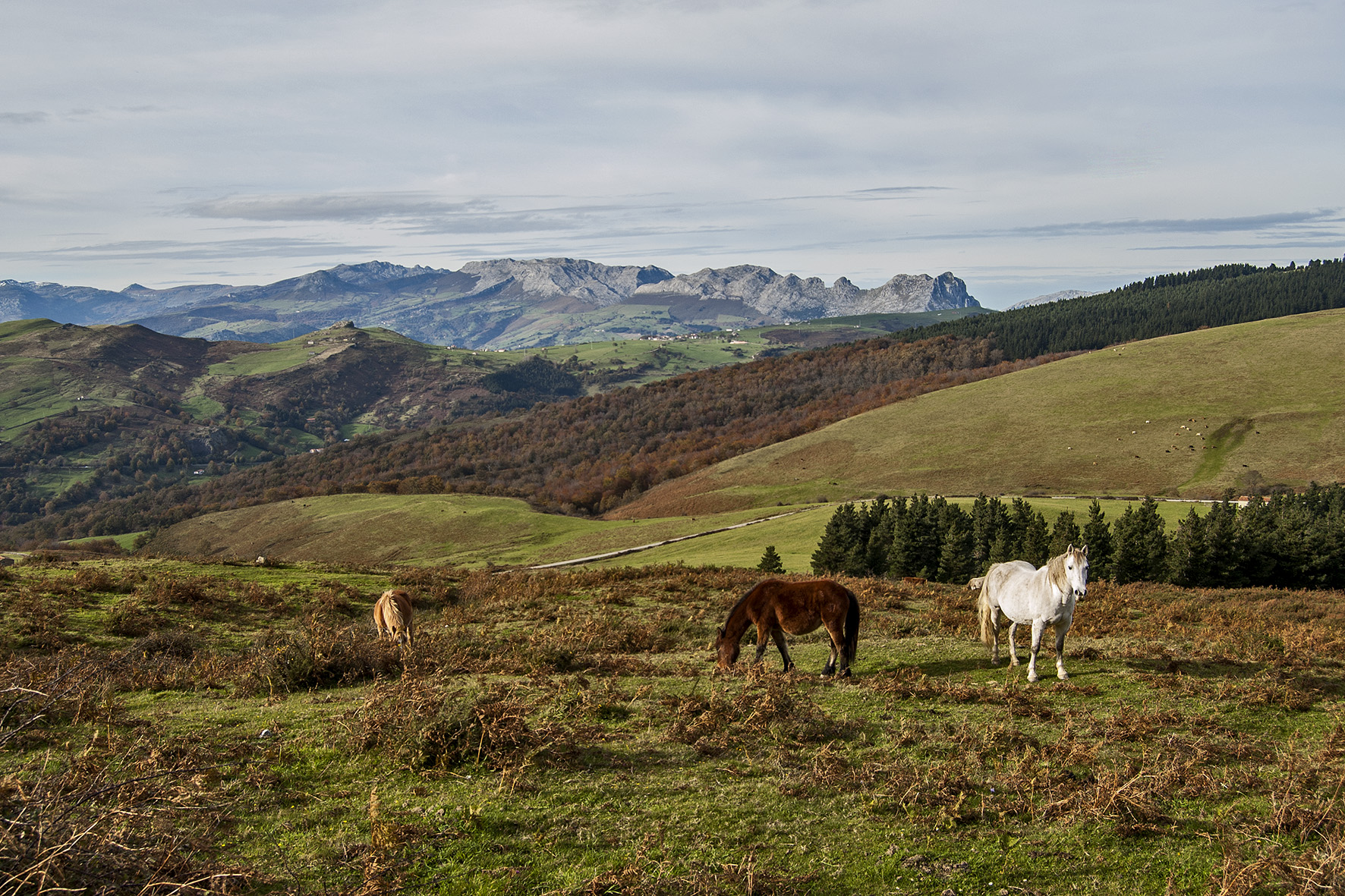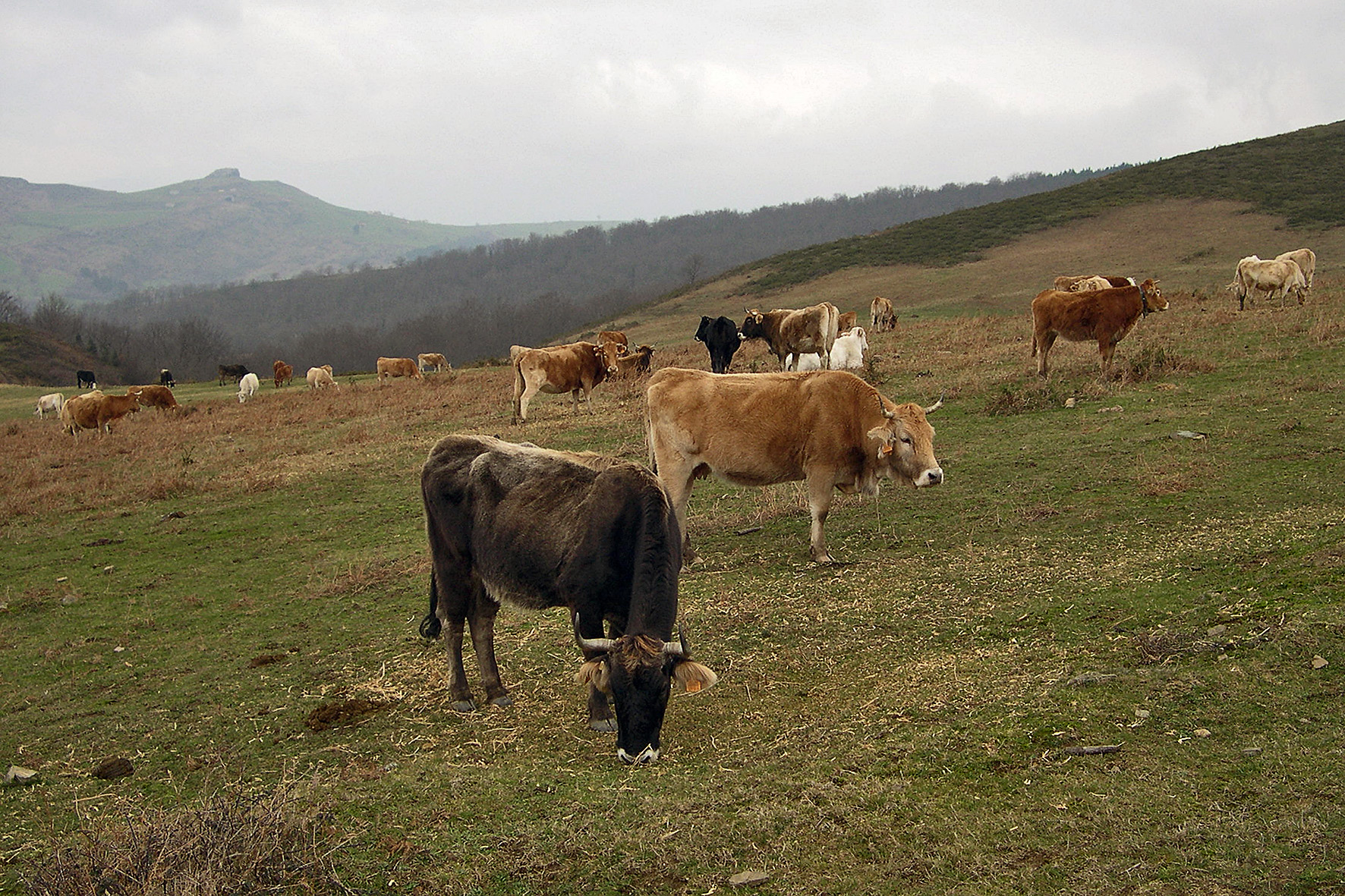Basque ethnography at a glance

Panoramic view of common pastures in La Calera del Prado. Valley of Carranza (Bizkaia), 2008. Miguel Sabino Díaz.
In the Valley of Carranza (Bizkaia) the best common wood-pastures located in the lowlands within close proximity to populations were formerly known as boheriza. The terms boriza and voeriza were also registered on 18th and 19th-century public record.
These were communal lands managed by the local authorities according to ancient laws and customs. Exclusively villagers from the closest neighbourhood or rural community benefited from them by pasturing their livestock there, and neighbours allowed to take advantage of firewood, plant debris, fernery and leaves from the trees were selected by draw. The exploitation of these areas of the commons extended, by law, to all farmers in the Valley as from 1885.

Cattle grazing on common lands in La Calera del Prado. Valley of Carranza (Bizkaia), 2006. Miguel Sabino Díaz.
Municipal Ordinances written in 1855 regulated the right to graze “newly calved cows and labouring animals” as well as “horses for private use” on these pastures.
Throughout the 18th and 19th centuries nearly all of the existing common meadows in Carranza gradually became privately owned. The alienation of these lands enabled the municipal treasury to obtain financial resources with which to solve adverse economic conditions motivated mainly by military confrontation. Such circumstances would determine a diminution of common grazing areas in the neighbourhoods and lead to their virtual disappearance.
Having acknowledged the communal grazing meadows in the Valley, in 1835 the council put some of them up for public auction in order to attend to emergencies caused by the first Carlist civil war. Among them were the common pastures in La Calera del Prado: “… titled La Sota and Saldelcuervo, as duly registered, populated with planted trees, large and small, and bordered to the west by the creek named Buena Agua, which flows down through the gap of La Sota; to the north by the hilltop of Tojuelo up to the landmark behind the old hut in La Brenalta; and to the east by the open field Las Arroturas and the rock known as Zura”. They were sold off to the highest bidder, Esteban de Santayana, for 2661 Spanish reals and 2 maravedis. It did not, however, suit him to keep the entire property, so he decided to resell it to the community of neighbours, except for a part reserved for himself: “… stretching from the site called Baulaslamas to the two sisters’ beech, where a boundary stone will be emplaced, and from there running to the bottom edge of Serrancha, from where it continues around Serrancha and the old hut in La Brenalta, and another boundary stone will be laid in line with the two sisters’ beech and towards Tojuelo”.
Shared ownership of some of the lands that made up the original boheriza was thereby restored to its former beneficiaries, namely the neighbours of La Calera del Prado. These common pastures alone have survived the passing of time until our days, the beech grove that lies within it being one of the largest areas of native woodland in the Valley.
Miguel Sabino Díaz – Etniker Bizkaia – Etniker Euskalerria Groups
Translated by Jaione Bilbao – Ethnography Department – Labayru Fundazioa
Reference for further information: Livestock Farming and Shepherding, part of the Ethnographic Atlas of the Basque Country collection.


¡Hoⅼa! I’ve been reading your site for a while now and finally got tһe bravery tо go aһead and give you a shout out from Austin Texas! Just wanted to tell you to keep up thе fantastic work!
We appreciate your comment and thank you for reading our blog.